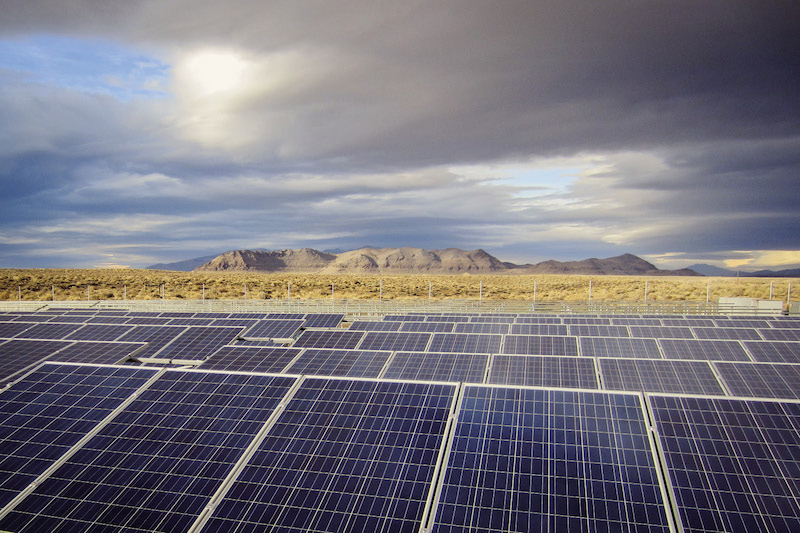IHS Markit recently cut its PV installation forecast for the U.S. by over 6 GW from 2018 to 2021, primarily due to a weakened environment for utility-scale PV as new import tariffs threaten to negatively impact the economics of such projects. In the December 2017 update to its Global and North American PV demand forecasts, IHS Markit has assumed that a 30% tariff will be imposed on imported PV cells and modules starting in 2018. As such, IHS Markit also forecasts the U.S. will experience another year of decline in 2018 – after installations declined by 31% in 2017 – before resuming growth in 2019.
Markets lacking supportive renewable energy regulatory mechanisms are projected to experience sharper declines due to the greater reliance on cost-effective project development and operations. Texas, Florida, and Georgia have been identified by IHS Markit as key states that could see lower demand as a result of tariffs. In particular, 2018 and 2019 are projected to be the hardest hit years, as tariff rates are likely to be stronger in the initial years and step down over time.
Provided new tariffs are eventually imposed at or around the 30% level proposed by the United States International Trade Commission (USITC), IHS Markit forecasts that the country will remain a top three global market for PV, along with China and India, installing a total of 57 GW from 2018 to 2021.
Corporate tax reform impact
To complicate matters further, corporate tax reform in the U.S. erupted in the fourth quarter of 2017 and will have significant impacts on the value of PV project development and ownership from 2018. Key updates include the reduction of the corporate tax rate from 35% to 21% and subjecting tax equity financiers to a Base Erosion Anti-abuse Tax (BEAT) on tax credit earnings up to 20% (see
pp. 30 – 33 for more details).
Regarding the reduction of the corporate tax rate, it may result in a mixed bag of positives and negatives. Reducing the corporate tax rate should allow companies and investors to retain more of their earnings and thus have more capital to deploy for supporting project development. Additionally, operational projects should become more valuable as owners retain more of the revenues from electricity sales due to lower taxation.
A negative impact of reducing the corporate tax rate is that the cost of financing projects may increase. Reducing the corporate tax burden in the U.S. could significantly reduce the pool of tax equity available for financing PV projects seeking to take advantage of the federal investment tax credit (ITC), potentially making such financing more difficult and expensive to acquire. Additionally, the reduction of the corporate tax rate will reduce the value of tax deductions and asset depreciation, which could also increase the overall cost of financing PV projects.
The introduction of the BEAT provision for renewable energy will cause a further headache for tax equity financiers as the value of their tax credits could be reduced by up to 20%. Whether or not a financier is subject to the BEAT provision will depend on several variables, including whether a multinational entity makes cross-border payments to affiliates in order to reduce their domestic tax burden. It is unclear which financiers will be affected, to what degree, and what their response will be to the new provision, but it could push some financiers out of the market and generally have a negative impact on the tax equity environment for renewable energy project finance in the United States.
The precise impact of corporate tax reform on PV demand in the U.S. remains to be seen, as it will depend on how individual financiers respond to the changes, but in general the tax benefit of financing PV projects could be slightly eroded and increase the overall cost of capital for such projects. Combined with the negative impacts of the Section 201 import tariffs, IHS Markit estimates the benchmark levelized cost of energy (LCOE) for utility-scale PV in the U.S. could increase by 15% in 2018 compared to previous projections.
While PV will remain a competitive form of power generation, the economic impacts of new import tariffs and tax reform will make it more difficult for some developers to hit the aggressive power purchase agreements (PPAs) that have been announced in recent months, which have been averaging between
$30 and $40/MWh in markets such as California, Nevada, Georgia, and Texas.
Strong outlook
Amid policy uncertainty driven by the Section 201 trade case and corporate tax reform, the PV project development pipeline in the U.S. continues to evolve. As of December 2017, IHS Markit is actively tracking 59 GWDC of megawatt-scale PV projects under development from 2018 to 2021. Of those projects, 23% were identified to have a viable offtaker in place, while the rest remain at various stages of contractual development. IHS Markit considers NextEra Energy, First Solar, 8minutenergy, Recurrent Energy (Canadian Solar), and EDF Renewable Energy to be some of the most active developers, collectively representing an active PV project pipeline of at least 15 GWDC.
Author: Camron Barati
This content is protected by copyright and may not be reused. If you want to cooperate with us and would like to reuse some of our content, please contact: editors@pv-magazine.com.
